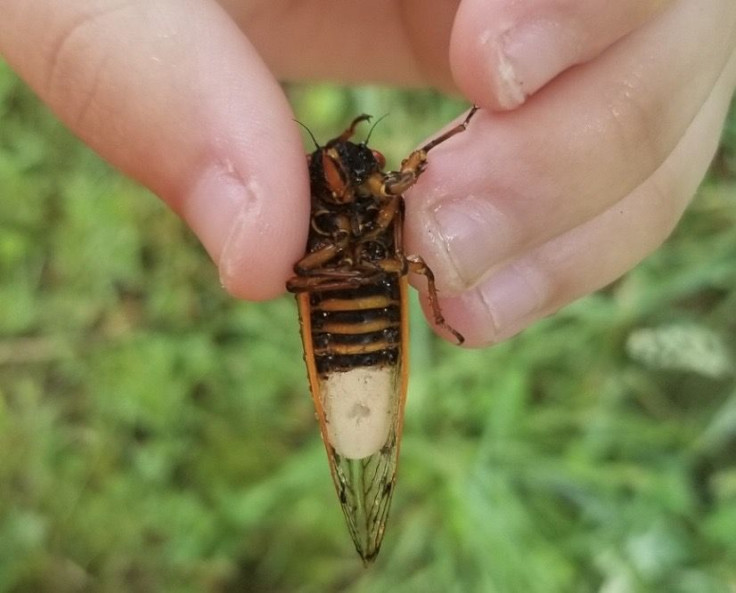'Zombie' Cicadas Trick Others To Spread Pathogens

KEY POINTS
- Cicadas can be infected by a pathogen that turns them into 'zombies'
- Researchers found that infected cicadas are made to behave a certain way to infect others
- The researchers liken the behavior-modification to that of the rabies virus
A new study has found how a parasitic fungus essentially tricks its host into spreading the infection further. This zombie-like means of spreading an infection has also been observed in cicadas.
Cicadas are unique in the insect world because, depending on the species, they emerge from the soil either annually or every 13 or 17 years. Earlier this year, for instance, 17-year cicadas emerged in several states after over a decade of being underground.
Apart from their emergence from the soil, there is another factor that contributes to cicadas' zombie-like characteristics: a parasitic fungus called Massospora. The fungus gnaws at the host cicada's genitals, abdomen and butt and replaces them with fungal spores.
In a new West Virginia University-led (WVU) study, the researchers found how the fungus actually manipulates the insects into spreading the infection further. Specifically, the fungus manipulates the infected male cicadas into flicking their wings the way females do when they are inviting to mate, thereby tempting other healthy male cicadas into coming closer and getting infected.
"Essentially, the cicadas are luring others into becoming infected because their healthy counterparts are interested in mating," study co-author Brian Lovett of WVU Davis College of Agriculture, Natural Resources and Design in a news release. "The bioactive compounds may manipulate the insect to stay awake and continue to transmit the pathogen for longer."
It's 2020, so the term "Zombie Cicadas" probably isn't so shocking. 😂 But, WVU researchers helped first discover why they act so undead ... a psychoactive compound in Massospora-infected fungi. Who would have ever guessed?!https://t.co/CLq3ho67Sd pic.twitter.com/7VJYAfthJX
— WVU Davis College (@wvudavis) July 27, 2020
This is called active host transmission (AHT), which is the means by which a pathogen actively enlists its live host for successful transmission. In this case, it is as though the cicadas are turned into "zombies" that behave in a way that is favorable to the pathogen, not themselves.
Ants in the Amazon rainforest are also victims of another spore that turns them into "zombies" and controls their every move. In their case, the infected ants are compelled to leave the nest and go to a place that is more favorable for the pathogen's growth. The ant is eventually forced to clench its jaws into a leaf vein where its innards will be eaten by the fungus until it dies and its body is eventually used as a launchpad to spread the spore further.
As for the Massospora, the researchers liken it with rabies in the way that it modifies the behavior of its host. With rabies, the host becomes aggressive and is eventually turned into a "rabies spreading machine" which bites other people to get them infected.
The researchers said the cicadas encounter the Massospora when they emerge in their 17th year. But young cicadas could also encounter Massospora when they're still on the way down to the soil where they will stay for years.
"The fungus could more or less lay in wait inside its host for the next 17 years until something awakens it, perhaps a hormone cue, where it possibly lays dormant and asymptomatic in its cicada host," study co-author Matthew Kasson of WCU Division of Plant and Soil Sciences said.
The researchers clarify that these cicadas are harmless to humans and, because of their reproduction rate, the fungi still have little effect on their population.

"It is clear that much remains to be discovered about the evolutionary history of AHT in fungi," the researchers wrote in their study. "These questions will be answered with increased sampling, improved genome assemblies, and increased natural history studies into these fascinating fungi and their unlucky insect victims."
The study is published in PLOS Pathogens.
© Copyright IBTimes 2025. All rights reserved.






















